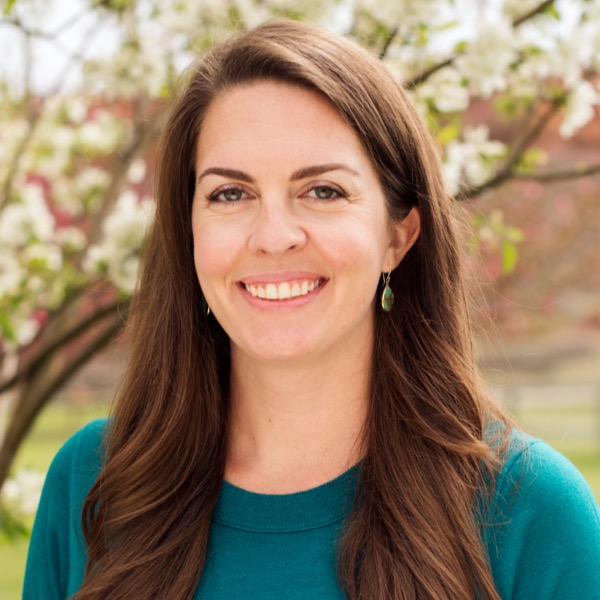Dr. Blaine Smith says the intersection of equity-minded education with the digital tools she specializes in became especially clear to her during her first Assistant Professor position at the University of Miami.
Working with culturally and linguistically diverse youth on a variety of research studies, Smith encouraged students to make meaningful connections to their lives when working on course projects. “Students were making references to the Black Lives Matter movement, climate change, immigration policies, and the border wall along Mexico,” Smith says. “Or if their parents immigrated from Cuba, students referenced the challenges of being an emergent bilingual in today’s world.”
Her student-centered assignments had long encouraged multimodal presentations that communicate through visuals, text, sound, and movement, which empower students to make connections between their personal lives, society, and the course content. Smith says, “Multimodal projects open up multiple points of entry for students,” reinforcing for every student that they can succeed at scholarly work and countering systematic racism.
Today, Smith is Associate Professor of New Literacies and Bi/Multilingual Immigrant Learners in the University of Arizona Department of Teaching, Learning, and Sociocultural Studies. Her seminars continue to emphasize multimodal composing, often with the goal of helping students increase their digital literacy skills. She works with pre-service and K-12 teachers from culturally and linguistically diverse and underserved schools, helping them integrate technology into their classrooms.
Smith is now looking forward to sharing her experience as part of the Every Learner Everywhere Expert Network, powered by ISTE. She is one of seven consultants providing flexible on-demand coaching to higher education faculty and leaders who are working to advance equity and inclusion in blended and online modalities. Her areas of expertise include instructional strategies for integration of technology in diverse classrooms, instructional scaffolding, assessment and outcomes, teaching multimodal composition, and digital literacies.
Personally meaningful connections
Smith is drawn to multimodal composing and multimodal assessments because, she says, “there’s really power for students to express themselves in personally meaningful ways — ways they can leverage their linguistic and cultural backgrounds.”
A written essay isn’t the only way for students to practice analysis skills, she says. For example, “In an English class, students can create a hyper-linked multimodal project or a video where they analyze literature through multiple modes and media.” The benefit, Smith says, is that “students are making personally meaningful connections in a way that’s even more relevant to their lives.”
“It’s really important to expand our notion of what literacy is to encompass digital literacies,” she says. “Students need to be prepared not only to read and write, but to communicate multimodally with digital tools in a variety of formats.”
Smith cautions against assuming digital literacy will take care of itself because today’s students are “digital natives.” They aren’t necessarily and may not even have access to essential digital tools. Working remotely with Indigenous students during the COVID-19 crisis, she discovered that many didn’t have access to the internet at home, and it was imperative that the university provide mobile hotspot devices, saving students from long drives to find public access. (Hotspots devices allow the user to connect their computer to the internet by pulling data from cell tower signals, as an alternative to the cable or telephone lines that are the usual way individual homes get internet service.)
Instructional scaffolding strategies
To assess students’ access to and familiarity with digital tools, Smith recommends using a survey at the start of the course to determine the level of support faculty will need to provide.
She guides the educators she works with to develop their own scaffolding techniques, which she says are especially necessary for students coming into online environments with less experience or fewer resources. For example, she advises her education students to:
- give explicit instruction on how to use digital tools needed for the course;
- foster collaboration and peer feedback;
- create assessments where learners share their work and expertise beyond the classroom, such as with their communities; and
- prepare to respond to unanticipated technology glitches, which, she says, “always happen.”
Ultimately, Smith says, “reflection has a really important part in scaffolding student learning. Students need scaffolding throughout their learning process, but it should be flexible and tailored to the particular needs of students.”
Coaching for connection
Smith works with student teachers giving one-on-one consultations, observing them in the classroom, and providing them with feedback to connect their equity practices, digital learning resources, and student needs. “I really look at innovative ways of integrating technology that can foster learning,” she says. “That includes collaboration, student-centered learning, authentic assessment, and ways that students can be empowered to share their work and voices with others.”
“In today’s world, we can’t ignore the systemic racism that’s happening,” Smith says, “The classroom shouldn’t be a vacuum. We should be connecting to the real world and what matters to students’ lives.”
This article is part of a series profiling consultants in the Every Learner Everywhere Expert Network, powered by ISTE. The program offers flexible, on-demand coaching to advance equity and inclusion in blended and online modalities using all aspects of digital learning.
Learn more about the program and schedule a consultation with Dr. Blaine Smith.


